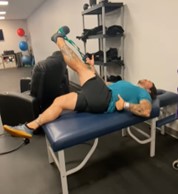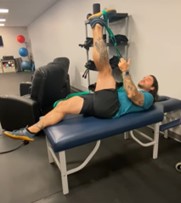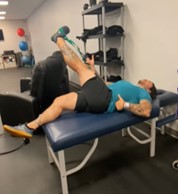The glutes are the largest, most important group of muscles in your body. They play an integral role in vital movements such as walking, running, and going up steps, as well as aiding in mobility and stability and preventing injuries in other areas of the body.
Our current culture leads many of us to have chronically tight hip flexors and weak gluteal muscles due to sedentary lifestyles with excessive sitting. Driving in the car, doing desk jobs, relaxing on the couch while you binge-watch your favorite TV show. However you choose to look at it, when we aren’t moving, the glutes are dormant, they’re no longer communicating with the brain and are “switched off” which creates an overreliance on other muscles like the hip flexors or lower back to perform movements that should really be dominated by the glutes.
The glutes are the human body’s epicenter of power, mobility, and stability. They’re composed of three muscles that work in tandem. The gluteus maximus is the largest glute muscle. It’s what propels you forward when you walk, run, or sprint. The gluteus medius maintains the side of the hip, it performs abduction movements, and supports the pelvis during gait by producing rotation of the hip with assistance from the gluteus minimus and the tensor fascia latae. The gluteus minimus is the smallest glute muscle and aids the glute med with internal rotation and abduction.
Weak glutes contribute to a myriad of health issues like poor posture, decreased mobility, balance issues, decreased strength, muscle pain, and potentially increase risk of injury. Strong glute muscles provide support for the spine and aid the pelvis with the proper stabilization it needs for healthy posture.
Limitations in hip mobility are often common even among active people because the glutes play such a major role in stabilizing the muscles in the hip, performing the range of motion of the femur, and producing power for explosive movements. Stretching the glutes out helps relieve tightness and tension and may help reduce discomfort in the low back and hips. Additionally, stretching the glutes can increase flexibility, and range of motion, and reduce the risk of injury.
An easy and effective stretch for the glutes is the banded crossover stretch that not only targets the glute muscles, but also stretches the muscles of the outer hip, lower back, obliques, and hamstrings. To perform this stretch you’ll need a band (or a dog leash). Wrap the band securely around the bottom of your foot, and lie flat on your back with both legs straight out. Lift the leg up that has the banded foot as high as you comfortably can without bending the knee. You should feel some tension in the hamstrings and calves. Once you reach this point, cross your leg over your body, using the band to slowly lower your leg back down over your side. The stretch should increase as you lower your leg down and should begin feeling a stretch in the glutes, especially in the glute med, outer hips, particularly, the TFL, and the low back. You can use the band to increase or decrease the tension of the stretch by pulling the leg towards your head as well. Hold the stretch for 30-60 seconds. It is okay to have some discomfort while you stretch, but it should not be painful and you should be able to breathe comfortably through it. If it is painful, stop the stretch immediately.



